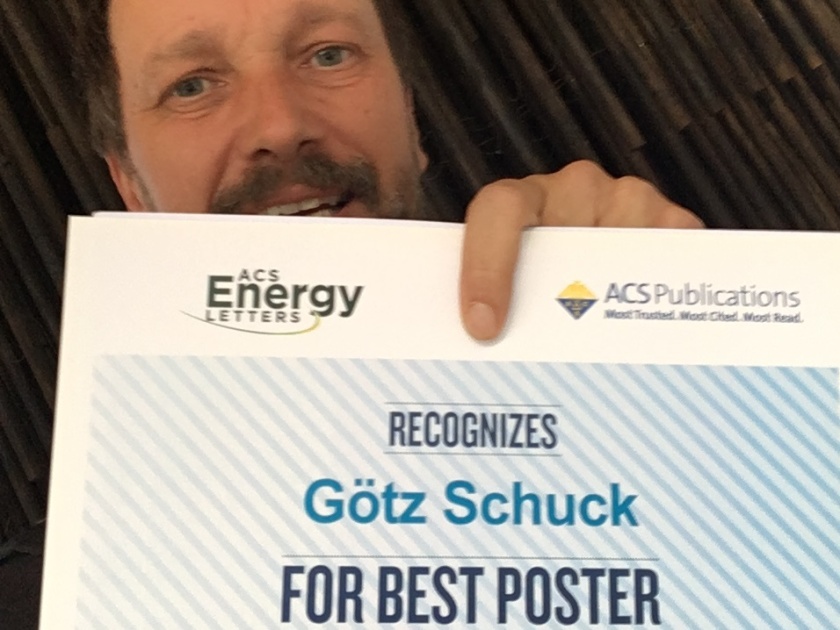Poster award for Götz Schuck

Dr. Götz Schuck was awarded a poster prize at the PSCO-19 © privat/HZB
At the 5th International Conference on Perovskite Solar Cells and Optoelectronics (PSCO-19) Dr. Götz Schuck received a prize for his poster contribution. The international conference took place from 30.09.2019 to 02.10.2019 in Lausanne, Switzerland.
Halide Perovskites are outstanding candidates for extremely efficient and yet cost-effective solar cells. In the most studied perovskite variant, the lattice sites of a perovskite structure are occupied by the halide element iodine, the metal lead and the organic molecule methylammonium. But what happens when iodine is replaced by chlorine?
Götz Schuck investigated this question using neutron scattering experiments and other methods. He presented the results on his poster titled "Influence of chloride substitution on the rotational dynamics of methylammonium in MAPb(I,Cl)3 perovskites".
"This award shows the high quality of Götz Schuck's research on the dynamic structure of halide perovskites", says Prof. Dr. Susan Schorr, head of the department Structure and Dynamics of Energy Materials. At the conference 150 posters have been presented, 7 of which were awarded with a poster prize.
red.
https://www.helmholtz-berlin.de/pubbin/news_seite?nid=20802;sprache=en
- Copy link
-
The twisted nanotubes that tell a story
In collaboration with scientists in Germany, EPFL researchers have demonstrated that the spiral geometry of tiny, twisted magnetic tubes can be leveraged to transmit data based on quasiparticles called magnons, rather than electrons.
-
Bright prospects for tin perovskite solar cells
Perovskite solar cells are widely regarded as the next generation photovoltaic technology. However, they are not yet stable enough in the long term for widespread commercial use. One reason for this is migrating ions, which cause degradation of the semiconducting material over time. A team from HZB and the University of Potsdam has now investigated the ion density in four different, widely used perovskite compounds and discovered significant differences. Tin perovskite semiconductors produced with an alternative solvent had a particular low ion density — only one tenth that of lead perovskite semiconductors. This suggests that tin-based perovskites could be used to make solar cells that are not only really environmentally friendly but also very stable.
-
Joint Kyiv Energy and Climate Lab goes live
Helmholtz-Zentrum Berlin and the National University of Kyiv-Mohyla Academy established on 27 November a Joint Energy and Climate Lab.
